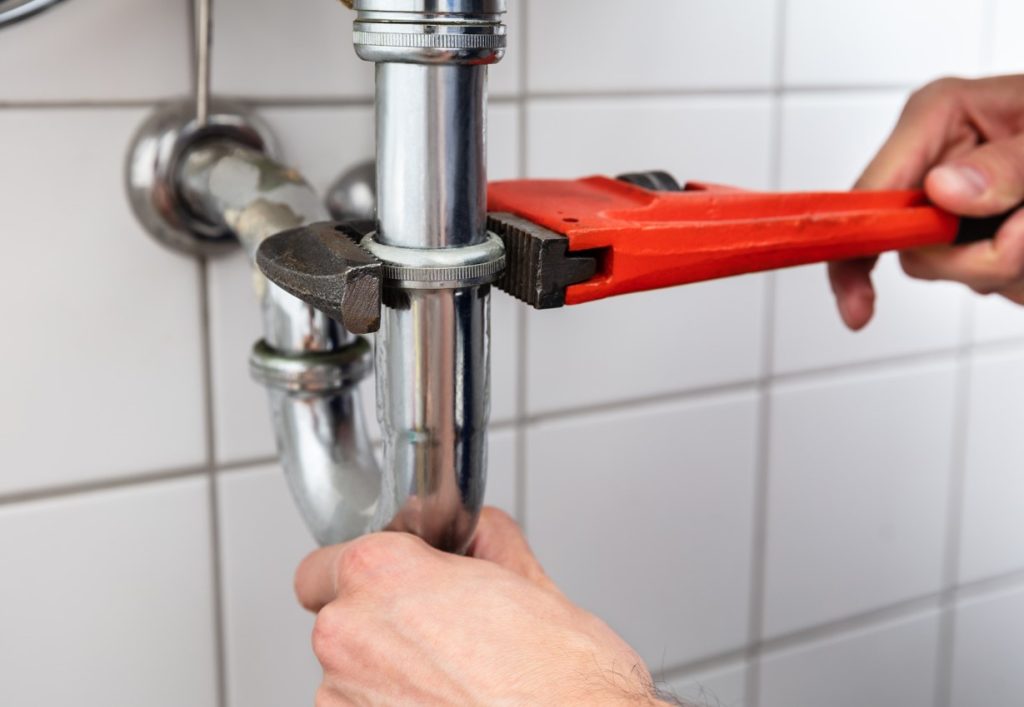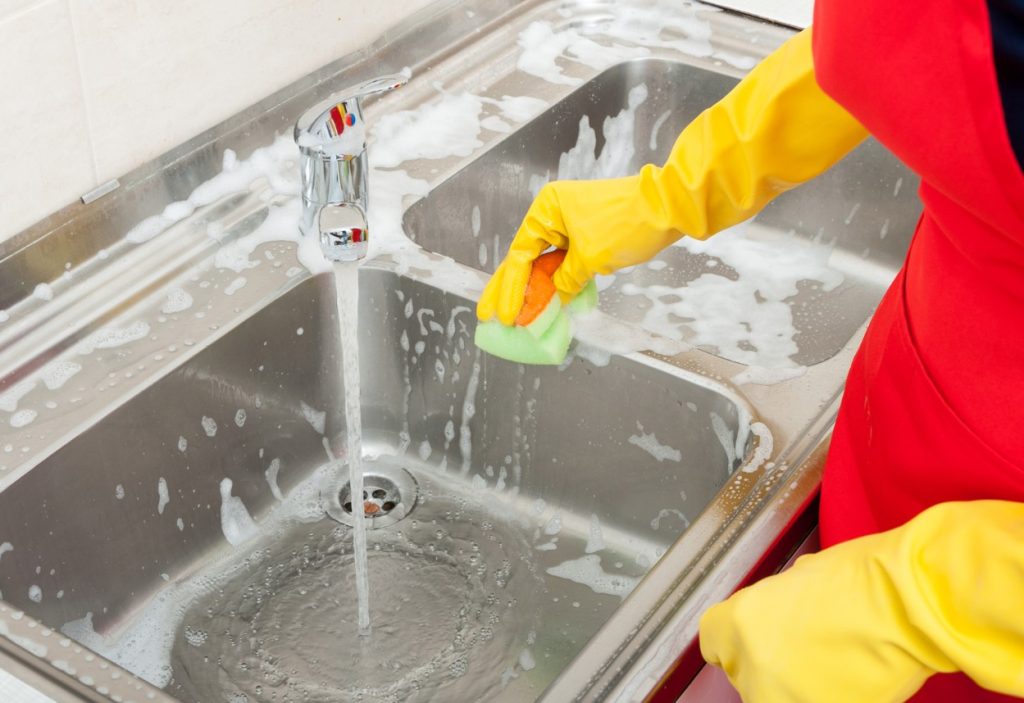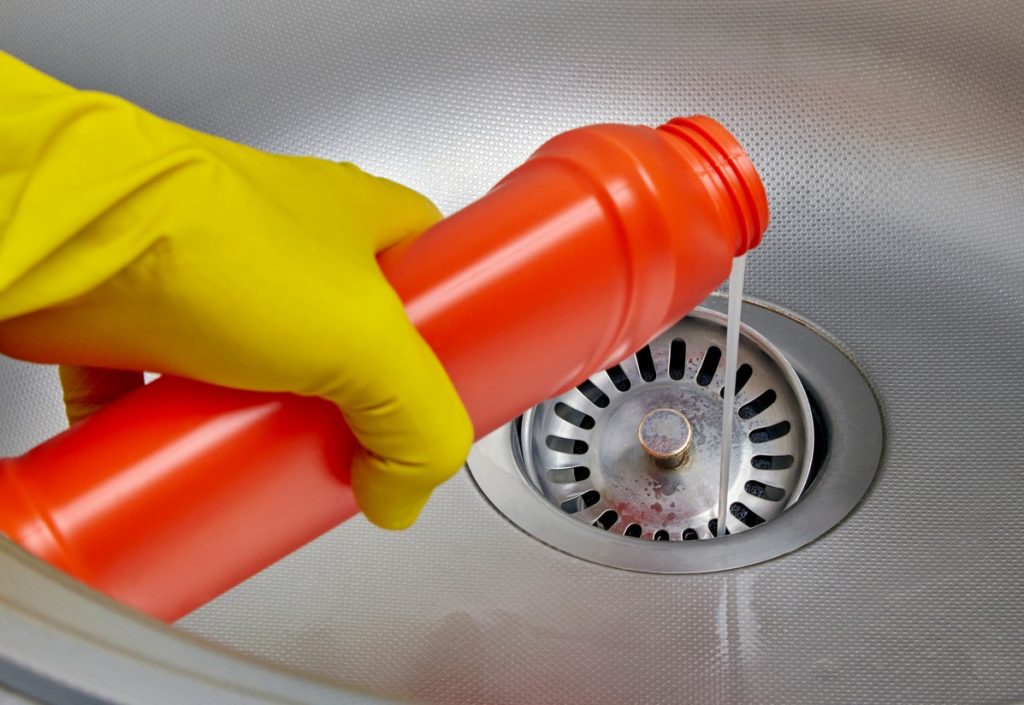Blocked sinks are a common household problem that can disrupt daily routines.
But fear not, there are plenty of home methods you can try to get your sink flowing smoothly again before resorting to professional help.
In this blog post, we will discuss what causes sink blockages, tools needed to unblock your sink, 7 tips on how to unblock your sink, how to stop your sink from blocking again, and when it’s time to call in a professional.
So let’s start by looking at what can cause the blockage in the first place.
What causes sink blockages?
The most common causes of kitchen sink blockages are food particles, grease, and oil, which can accumulate in the pipes over time.
In bathroom sinks, the culprits tend to be hair, soap scum, and other hygiene product residues. All of these materials can cause blockages by sticking together and creating a solid mass that obstructs the flow of water. Telltale signs of a blocked sink include standing water/excess water sitting in pipes, foul smells emanating from drains and slow running water.
As you can see, a lot of these blockages can be avoided by being mindful of what you’re putting down your sinks. Wherever possible, you should look to dispose of anything solid or moisture-absorbent in the bin.
But more on prevention later. First, let’s gather what we need to unblock your sink.
Tools needed to unblock your sink

Some essential tools for unblocking a sink include:
- Plunger
- Drain snake or auger
- Pipe wrench
- Bucket
- Rubber gloves
- Bicarbonate of soda and vinegar
Now that we have all the equipment ready, let’s look at some tips for unblocking sinks.
7 Tips on how to unblock your sink
1. First try boiling water/flush with hot water

A quick, simple and cost-effective fix! Simply boil the kettle and pour boiling water down the sink. It couldn’t be easier. For minor blockages caused by sludge and soap scum, boiling hot water will break down the offending articles allowing your water to flow freely once more.
2. Use a plunger

Place the plunger over the sink drain, ensuring an airtight seal. Push and pull the plunger forcefully to generate enough suction to dislodge the blockage.
3. Try a drain snake or auger

If the plunger doesn’t work, a drain snake or auger can be helpful. Feed the end of the snake into the drain opening, turning the handle to help it navigate through the pipe and towards the u bend. Once it hits the blockage, you can use the snake to break it up or pull it out. For a less refined alternative, try a wire coat hanger.
4. Use a pipe wrench

Occasionally, it may be necessary to access the pipes beneath the sink. Always ensure you have a bucket ready to catch any water that may spill out. Loosen the trap (the curved section of the pipe) with a pipe wrench, allowing any water and debris to fall into the bucket.
5. Mix baking soda and vinegar

This is a natural and environmentally friendly way to clear a blockage. Pour half a cup of bicarbonate of soda (or soda crystals) into the drain, followed by half a cup of white vinegar. Let this mixture sit in the drain for about 20 minutes, then rinse with boiling water.
6. Regularly clean your sink

This might seem like a no-brainer, but many blockages can be prevented by regular cleaning. Spend a few minutes each week scrubbing your sink and flushing it with hot water to prevent build-up.
7. Last resort – try chemical drain unblockers

The harsh chemicals in commercial drain unblockers can be bad for your pipework and are definitely not good for the environment. That being said, when used conservatively they can sometimes be the missing piece in getting that kitchen or bathroom sink clear and clean.
Remember, if these methods don’t work or if the blockage recurs frequently, it may be time to call in a professional plumber. It’s always better to seek professional help than to risk damaging your plumbing system.
How to stop your kitchen sink/bathroom sink from blocking again
Now that you’ve successfully unblocked your sink, let’s look at what you can do to prevent sink blockages from occurring again.
- Use a sink strainer or stopper over the plug hole to catch food particles and other debris before they get into the drain pipe.
- Invest in an enzyme cleaner. Enzyme cleaners help break down organic matter such as food particles, oils, and grease.
- Avoid harsh chemical drain cleaners as they can damage pipes over time. Instead, use a mixture of baking soda and vinegar for a natural alternative as we’ve mentioned above.
Taking these steps can go a long way in helping to keep your sink free-flowing in the future!
When to call in a professional
If you have tried all the tips mentioned above and still cannot unblock your sink, it’s time to call in a professional. Persistent blockages may indicate an underlying issue such as damaged pipes or tree roots intruding into your plumbing system.
A professional plumber will be able to diagnose the issue using professional tools in order to deliver a long-term solution.
Conclusion
That’s it for our blog post on unblocking sinks!
Unblocking a sink can be a challenge, but with these tips and tools, you’ll be better prepared to tackle your blockage before calling a professional. Remember, prevention is key in keeping your sink flowing smoothly and avoiding future blockages.
If you’re dealing with a persistent blockage that DIY methods can’t solve, don’t hesitate to reach out to the experts at 01732 667 688. Our team utilises specialised tools and techniques like CCTV inspection cameras and power flushing to quickly and safely unclog drains, ensuring smooth operation. Contact us today to learn more about our services.
We hope you found this blog post helpful. Good luck unblocking your sink!
For even more tips on how to keep your sinks problem-free, take a look at our other blog posts about plumbing maintenance and repairs.
 01732 667 688
01732 667 688


